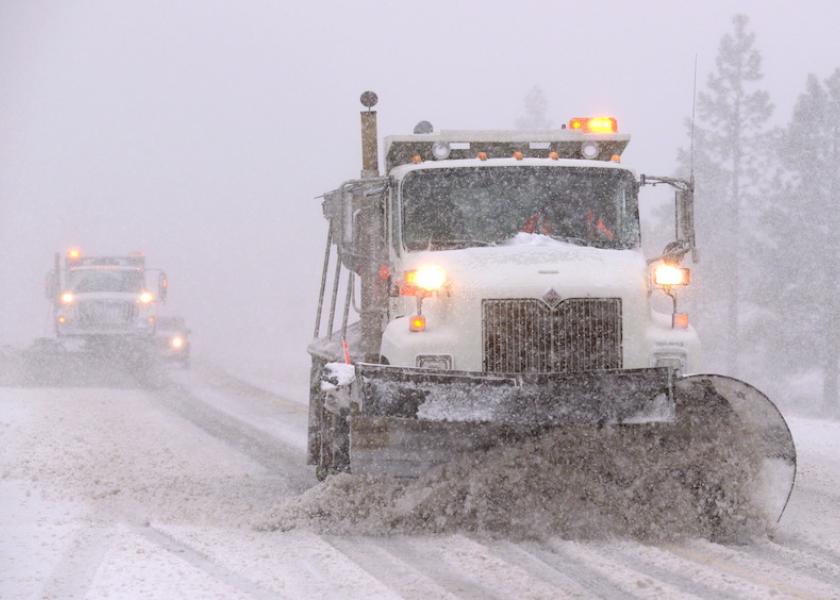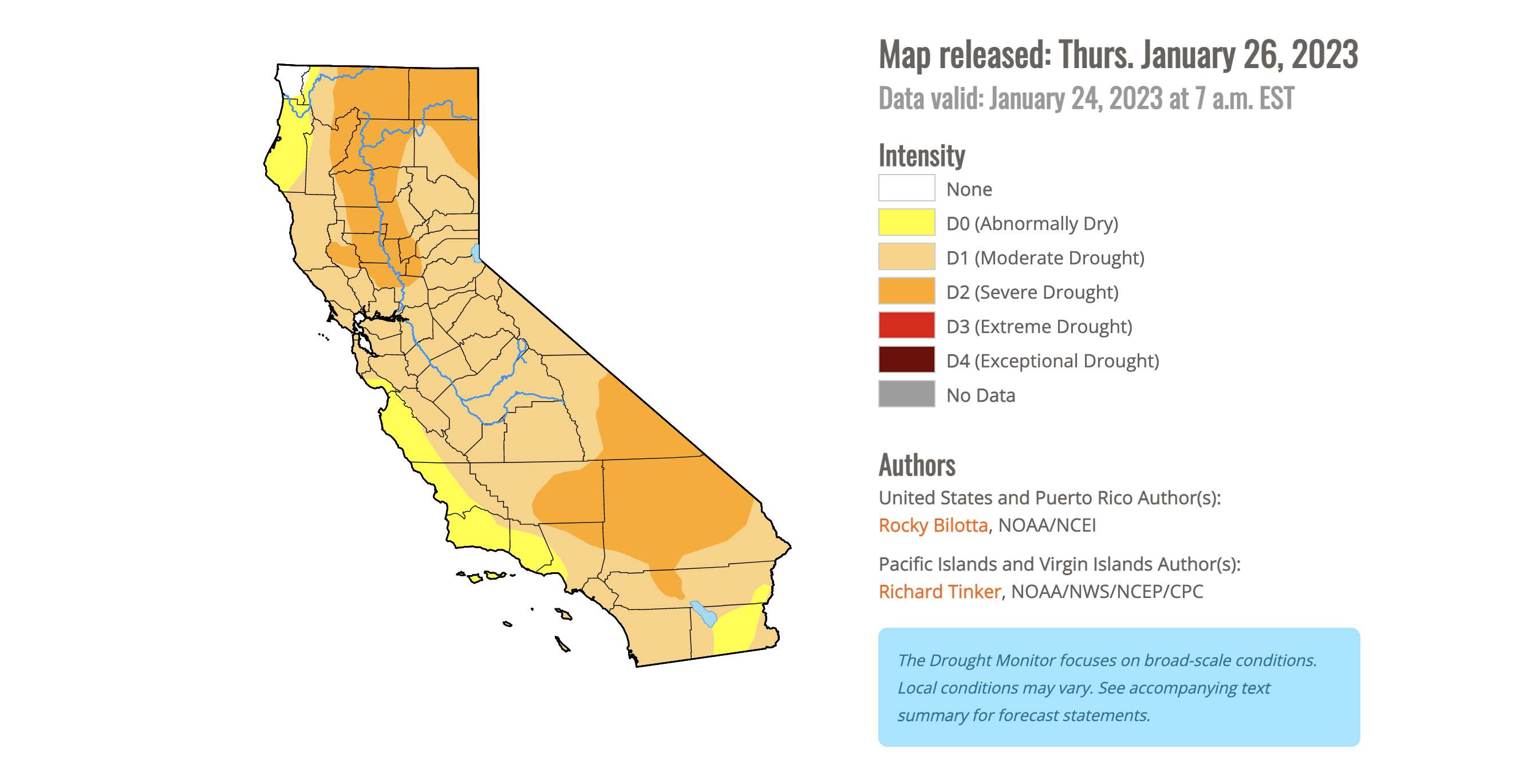Does All This Rain and Snow Mean La Niña Is Loosening Its Grip On the U.S.?

California was hammered with moisture to start the year, a significant change from the dire drought situation that’s plagued the state for three consecutive years. An atmospheric river, which causes consecutive storms with intense moisture, caused flooding, mudslides and dropped feet of much-needed moisture in the mountains.
The change from no moisture to too much precipitation in some areas is a sudden switch. It’s also planting a new question: Is the weather pattern finally changing, and will California start to dig out from the severe drought?
“That is one of the strangest things about this wet spell is that it's coming during the third year of La Niña, which is still going,” says Brad Rippey, USDA meteorologist. “We still have the cool water in the equatorial Pacific. And all signs continue to point toward La Niña is still active in the Pacific Ocean,” he says.
Rare, But Not Unprecedented
The atmospheric river produced historic rains, and proved to be a rare occurrence for an area facing three consecutive years of drought.
“This is not completely unprecedented, but it is very rare,” says Rippey. “I will say that the last time this happened was back in 2016 to 2017, when we had a weak La Niña year that year, but we did have excessive precipitation.”
Read More: Will There Be A Lettuce Shortage This Year As Parts of Drought-Plagued California Are Now Flooding?
Kirk Hinz of BAMwx agrees the systems California has seen the past three weeks are rare, but he says signs point to a weakening La Niña.
“Think about it. As jet streams go, La Niña generally means a weaker jet stream. El Niño is a stronger jet stream. Well, you get an atmospheric river event from a stronger Pacific jet stream, which is El Niño-like related,” Hinz explains. “So, that tells me that you know, no matter what happens in the ocean, the atmosphere is starting to trend something away from La Niña.
Still Seeing Drought

Even with the deluge of rain, lingering drought is still impacting the state. The U.S. Drought Monitor shows 92% of California is still covered in drought. The picture is improving, though. Three months ago, nearly 41% of the state was seeing D3, or extreme drought. Today, that's dropped to 32%.
The significant improvement is planting hope the state is possibly turning a corner and can start to recover some of the scars left from so many years of drought and dry weather. The moisture is helping replenish some of what was lost.
“I think we saw a 40- to 50-foot recovery in like two weeks in some of these basins,” says Hinz. "That is what was needed in a lot of those areas. And I would say outside of El Niño or La Niña, that that soil moisture going into spring is a very understated, impactful driver.”
Promising Snowpack
The latest snowpack assessment shows levels in the Sierra Nevada reached 250 percent of normal. Far northern California is seeing snowpack 200 percent of normal.
“Certainly, from a water allocation standpoint, we should be in much better shape in 2023 than any of the three preceding years. So that should be a boon to some of those Central Valley farmers in terms of water allocations as we move later into 2023,” says Rippey.
Read More: Major Flooding: Bomb Cyclone Storm Causing Havoc to California Dairy Farmers
Is it just the start of a changing scenario for the drought-stricken West? Rippey says today La Niña hasn’t lifted its grip, with the rare January tornado touching down in Iowa last week as proof.
“I think we can blame that on La Niña, without a doubt,” Rippey says. “We have a very active storm track. It has shifted now away from the West. But now we're seeing the storm starting to light up across the middle part of the country, central and eastern U.S., also snow into Nebraska.”
Active Weather Pattern to Finish January
Snow brought some drought relief to the north-central Great Plains just last week, which is good news for winter wheat and soil moisture overall, but it's also a warning that more severe weather outbreaks could be on tap yet this month.
“The active storm track has shifted, but we remain in a hyperactive weather pattern as we head through the rest of January, just a different part of the country than what we saw for the first half,” Rippey says.
Is El Niño Knocking at the Door?
Rippey points out it's not unprecedented to have a wet year like this during La Niña, but he says historically, it is rare. So, what about longer term?
"There's no sign that El Niño is lurking or ready to come in. It looks like we'll hit into a neutral condition by the spring sometime," he says. "So, this is just one of those things, and I say this all the time when we talk about La Niña. La Niña comes in different flavors. A little repositioning of the jetstream makes all the difference in the world."







